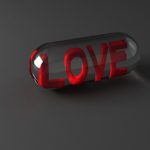Modern biology isn’t taught in your granddad’s school lab.
Modern biology students disassemble nucleosomes. They learn how to amplify a gene. They analyze mutant genes. They alter DNA in bacteria to make them glow in the dark.
Just a few decades ago, experiments of this kind were beyond the technology of the time. Then they required prohibitively expensive equipment. But over the last 40 years, Modern Biology has been bringing learning experiences to high school and college biology classes that fit in school budgets and even save teachers preparation time.
The other side of this reality is biology teachers need to be teaching what were once considered “advanced” experimental techniques to keep up with the demands of modern biology curriculum.
Nowhere is this more obvious than in the teaching for the structure and function of DNA.
Gaining a basic understanding of the complex interdependence of the structural properties of DNA and the observable functions of DNA has become a primary goal of biology courses, especially for students who will go on to study biochemistry. However, many biology students struggle to translate the static, two-dimensional images they see in textbooks to the dynamic, three-dimensional functions they represent.
This gap in comprehension leaves many introductory biology students with serious misconceptions about how the structural properties of DNA relate to the function of DNA. For instance:
- Many students assume that the bases in DNA are always stacked in double helices extending in straight lines.
- Many students cannot visualize how DNA could be accessible to proteins.
- Students have difficulty visualizing DNA repair.
- Students cannot visualize how transcription factors can interact with a specific segment of DNA without breaking the hydrogen bonds that hold DNA in a double helix.
- Students fail to visualize and recognize the functional differences between positively and negatively supercoiled DNA.
Tangible, physical models of DNA, or, better yet, hands-on experiments with actual DNA, help students visualize the structure and function of DNA. Working with models of DNA and experiments using DNA empowers students to understand higher order concepts. They gain the ability to answer more advanced questions about the applications of DNA. They develop reliable mental scaffolds to translate 2D molecular models into 3D molecular models.
Tangible, physical models and hands-on experiments with DNA even help to make the study of DNA more inclusive. Educators at the University of Wisconsin at Madison and the Milwaukee School of Engineering found that female students especially benefited from the ability to refer to tangible models as they learned the basic structure and function of DNA.
This finding prompted the publication of the Biomolecular Visualization Framework, which was based on the American Society for Biochemistry and Molecular Biology’s (ASBMB) foundational learning goals. The Biomolecular Visualization Framework articulates overarching themes and goals and objectives for biology teaching that support core understanding of DNA.
This framework identifies overarching themes and provides learning goals and objectives that outline core content and competencies for instructing in macromolecular visualization.
What are the standards for teaching structure and function of DNA? For students in AP biology and survey courses in college, the ASBMB identifies a series of standards.
ASBMB Learning Goal: Students should be able to discuss the diversity and complexity of various biologically relevant macromolecules and macromolecular assemblies in terms of evolutionary fitness.
Macromolecular Assemblies (MA) Objective MA1: Students can describe macromolecular assemblies.
To achieve this goal, some students will use a 3D printer to create a model of a strand of DNA. Others will use colored balls with flexible connections to construct a model of a segment of DNA. In this exercise, it is important for students to create models which are not strictly linear. All of your students can gain hands-on experience with isolating DNA to formulate testable hypotheses about structure and function.
Macromolecular Interactions (MI) Objective MI1: Students can predict interactions using structural information.
Here your students can use electrophoresis to visualize the simplest measurable difference in DNA samples, length of the segment.
Now let’s consider some other standardized learning goals.
ASBMB Learning Goals: Students should be able to discuss the interactions between a variety of biological molecules (including proteins, nucleic acids, lipids, carbohydrates, and small organics, etc.) and describe how these interactions impact specificity or affinity leading to changes in biological function.
And also:
Students should be able to discuss the interactions between a variety of biological molecules (including proteins, nucleic acids, lipids, carbohydrates, and small organics, etc.) and describe how these interactions impact specificity or affinity leading to changes in biological function
Experiments from Modern Biology can guide your students through the learning process for these ASBMB learning goals. They can study the composition of the nucleosome. Your students can isolate nucleosomes from newly formed chicken erythrocytes, isolate DNA, and estimate the molecular weights of five histone proteins. They can do real experiments involving the isolation of chromosomal proteins,
Modern Biology provides you with the tools you need to guide your students step by step through mastering the learning objectives set by your school board, your state, and national organizations such as the ASBMB. With all the laboratory supplies you need in a single convenient kit at a price your school can afford, you can leave the work of ordering and inventory to us and focus on making sure your students leave your course with a robust understanding of the structure and function of DNA.
And as the study at the University of Wisconsin indicated, using experiments to reinforce concepts of structure and function of DNA makes your class more inclusive.
Find out why 80,000 teachers use Modern Biology to teach labs for over 500,000 students.
Related Posts












